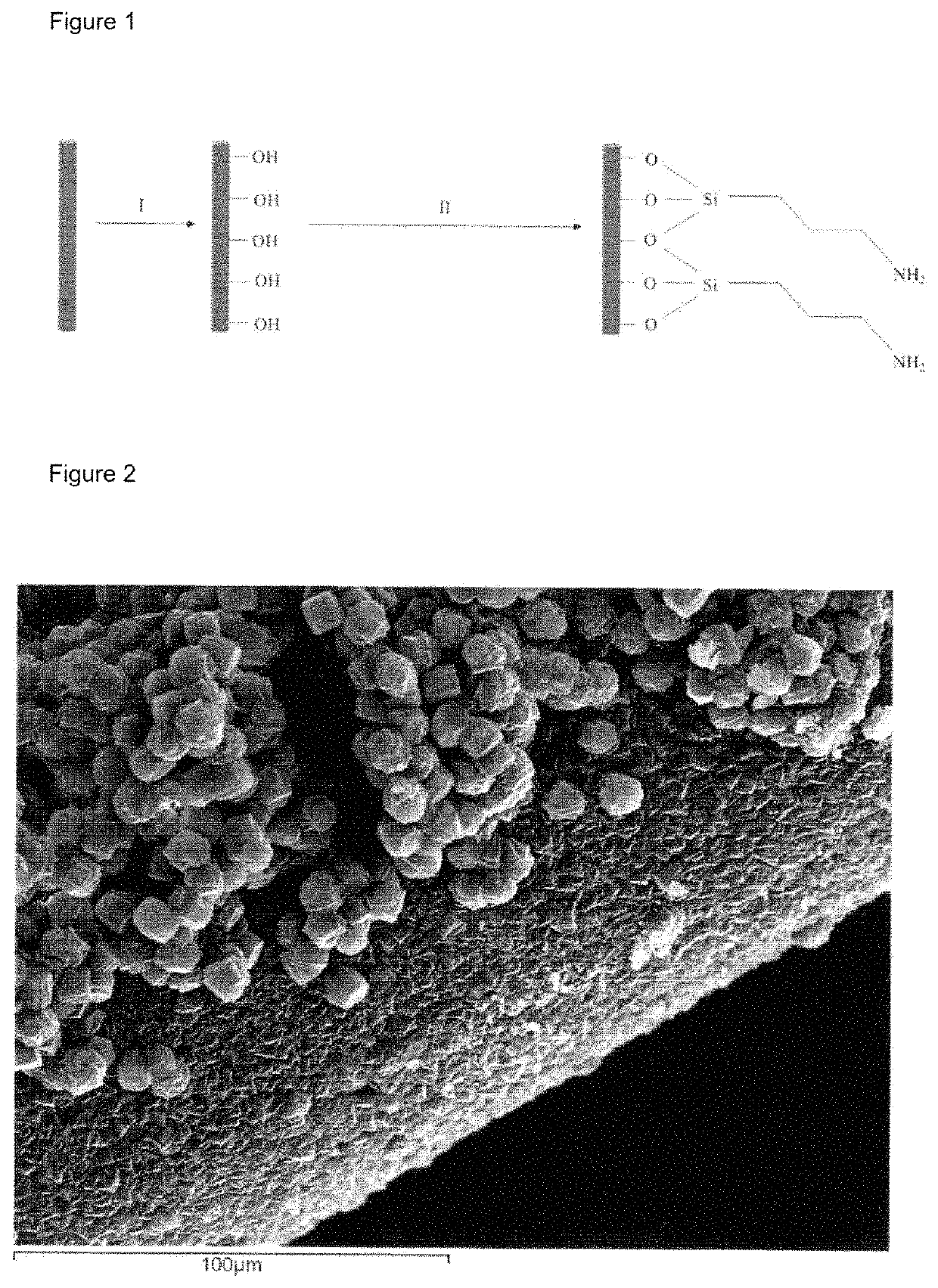Stationary phase for solid-phase microextraction device
a microextraction device and stationary phase technology, applied in the direction of instruments, other chemical processes, separation processes, etc., can solve the problems of affecting the extractive efficiency or uniformity of the coating, presenting functionalization and adhesion problems, and lack of intrinsic reproducibility, so as to achieve better extractive efficiencies
- Summary
- Abstract
- Description
- Claims
- Application Information
AI Technical Summary
Benefits of technology
Problems solved by technology
Method used
Image
Examples
Embodiment Construction
[0028]The following examples are provided by way of illustration and are not intended to limit the present invention.
[0029]In one embodiment of the invention, the stationary phase of the radial atomic sequence Ni / Ti—O—Si—CH2—(CH2)4—CH2—NH2—Al—O—C-metal-organic framework (MOF) is obtained by means of three steps: i) immersion of the nucleus in an alkaline solution, ii) adhesion of a silane with amino-terminal functionalization and iii) growth of the MOF by means of a solvothermal technique. The detailed method is as follows:
[0030]1. A nitinol fiber is used and immersed in a solution of H2O2 (5-30% v / v) for 1-3 hours at reflux. The fiber is extracted and washed with distilled water and ethanol. The fiber is then introduced into a vial containing (3-aminopropyl) triethoxysilane for 2-24 hours at 30-50° C. The fiber is extracted and washed with ethanol (FIG. 1).
[0031]2. 1 cm of the pretreated fiber is immersed in an aqueous solution (15 ml) containing 1 mmol of mesaconic acid, 1 mmol of...
PUM
| Property | Measurement | Unit |
|---|---|---|
| thicknesses | aaaaa | aaaaa |
| thicknesses | aaaaa | aaaaa |
| thicknesses | aaaaa | aaaaa |
Abstract
Description
Claims
Application Information
 Login to View More
Login to View More - R&D
- Intellectual Property
- Life Sciences
- Materials
- Tech Scout
- Unparalleled Data Quality
- Higher Quality Content
- 60% Fewer Hallucinations
Browse by: Latest US Patents, China's latest patents, Technical Efficacy Thesaurus, Application Domain, Technology Topic, Popular Technical Reports.
© 2025 PatSnap. All rights reserved.Legal|Privacy policy|Modern Slavery Act Transparency Statement|Sitemap|About US| Contact US: help@patsnap.com


